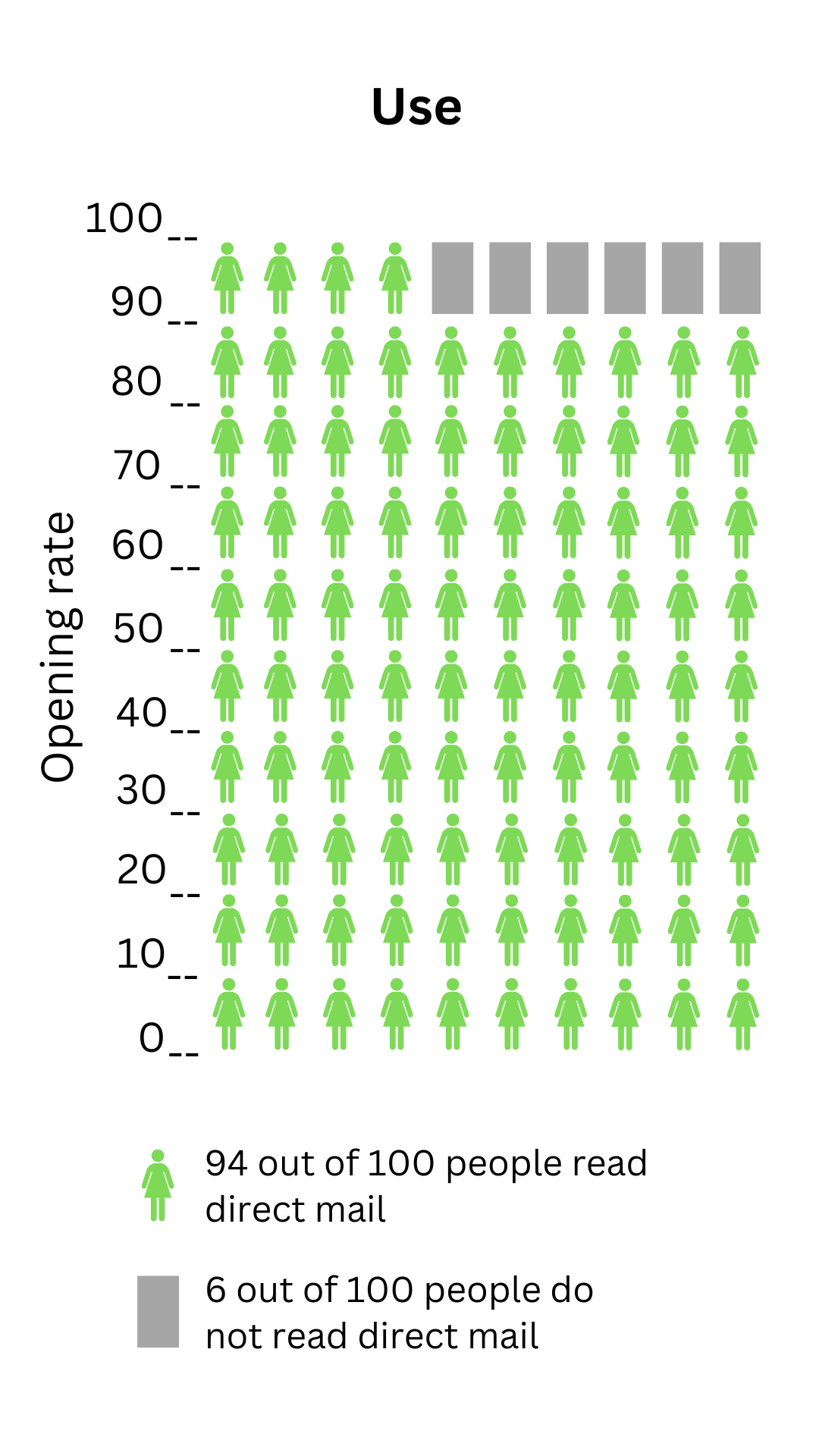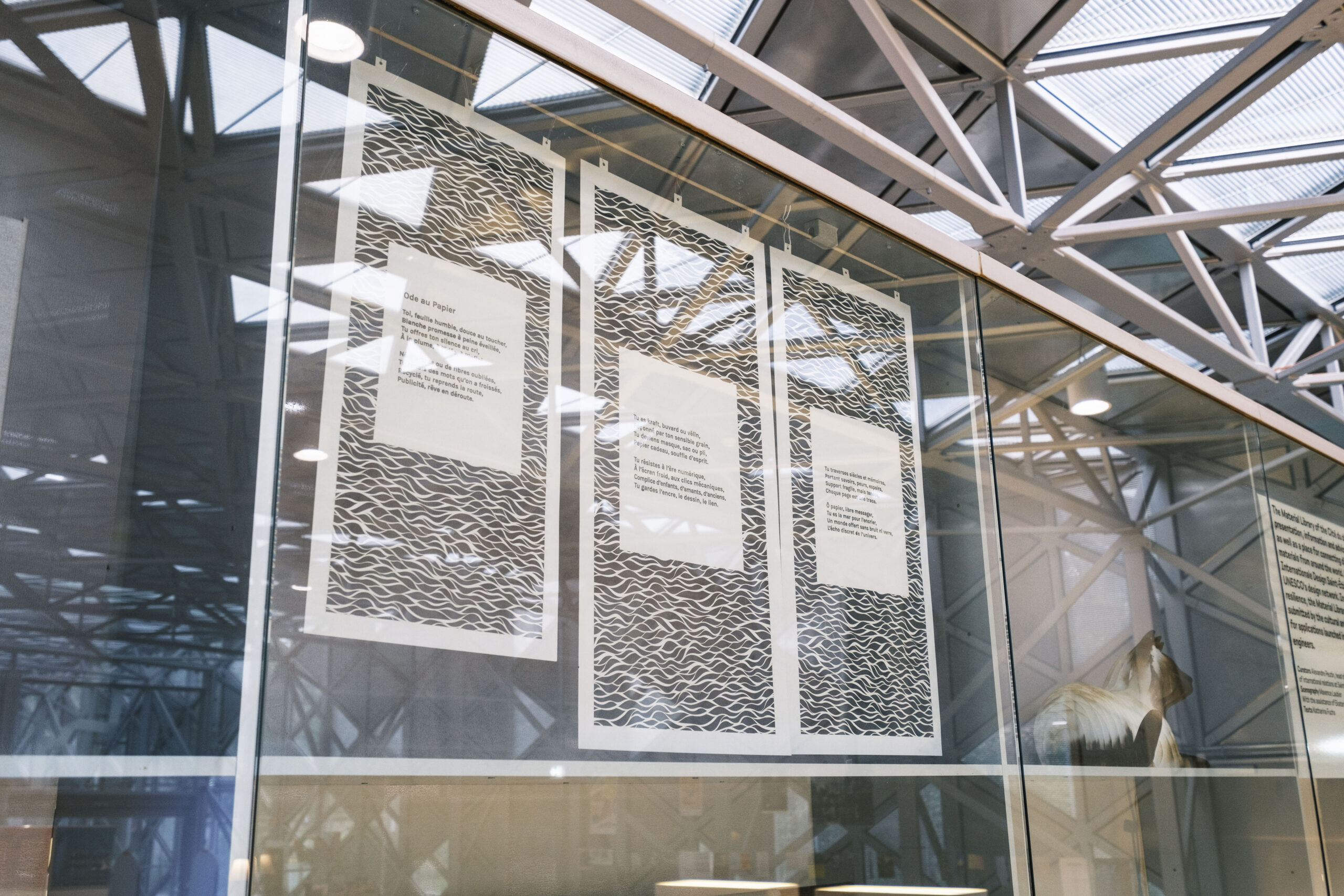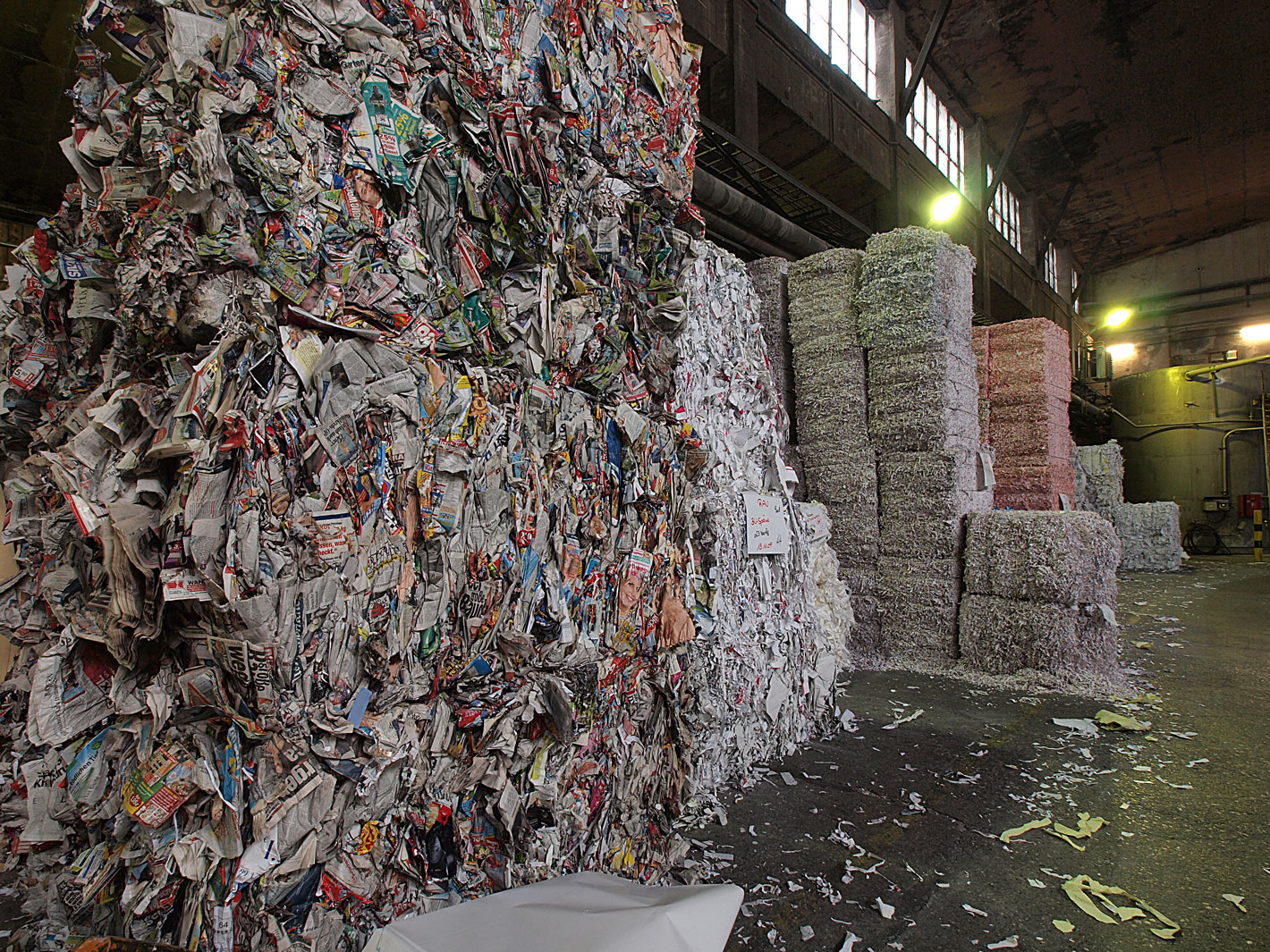Imagine getting your message directly into the hands of your customers and being confident that it will be opened and appreciated. That is precisely what is possible with direct mail. The British Royal Mail has invested much time and money in researching the effectiveness of media channels and has discovered relevant insights.
A recent study by the Royal Mail reveals that 94% of individuals who receive direct mail open it and engage with it in various ways, whether by reading the contents or saving it for some time. Only 6% of recipients do not open or discard the mail. These figures illustrate the direct connection created through printed materials and provide us with the opportunity to share relevant information on a broad scale and establish a sustainable connection.
OPENING RATE AND APPRECIATION:


Why are these so significant? Trust is a crucial factor in making purchasing decisions. Therefore, it's a no-brainer to conclude that printed paper is part of the solution since it is perceived by an overwhelming majority to be more trustworthy than an email, for example (more on that later).
The high opening rate and appreciation of printed materials clearly demonstrate that direct mail is perceived with greater awareness and that the handling of the messages is more intense. The use of printed communication allows companies to establish a deeper connection and establish a long-term relationship based on trust with their customers.
The connection between sensory perception and recall
Another interesting effect is recall. Mail is remembered 35% more than social media information and 49% more than email marketing messages. Recall plays a crucial role in building trust between business partners or customers.
There are several reasons why printed materials have a higher recall effect. When reading a printed letter, we can touch the pages, feel the paper, and sense its texture. This physical interaction enhances sensory perception and promotes a connection with the content. Additionally, printed materials allow for the presentation of visual elements such as images and graphics in a high-quality and appealing manner, which strengthens the recall.
Another factor contributing to better recall is reduced distraction. While using digital media, we are often exposed to a multitude of other information and activities. Emails arrive almost every second, notifications on our smartphones from social media, news, and other apps divert our attention. In this hectic and overstimulated digital world, it is often challenging to focus on a single task.
“There is nothing you are doing while reading a letter!"
On the other hand, printed materials offer a way to consciously detach from digital distractions and fully focus on the content. While reading a printed letter or work, we can devote ourselves entirely to the message without being interrupted by notifications. This allows for a deeper and more sustainable processing of information, which in turn leads to better recall.
The importance of recall should not be underestimated, especially when it comes to building trust with customers or business partners. People tend to trust brands and companies they can remember better. If your messages are remembered better through printed materials, you have the opportunity to leave a positive and lasting impression on your customers.
In times when we are often overwhelmed by digital stimuli, we should not underestimate the power of printed materials.
Experience the tactile sensations and emotions with our premium recycled paper and get inspired by the power of printed materials. Get in touch with us for an individual consultation and discover how you can elevate your marketing communication to a new level.
Source:
www.royalmailwholesale.com/research-and-reports
www.edelman.com/trust/2023/trust-barometer







